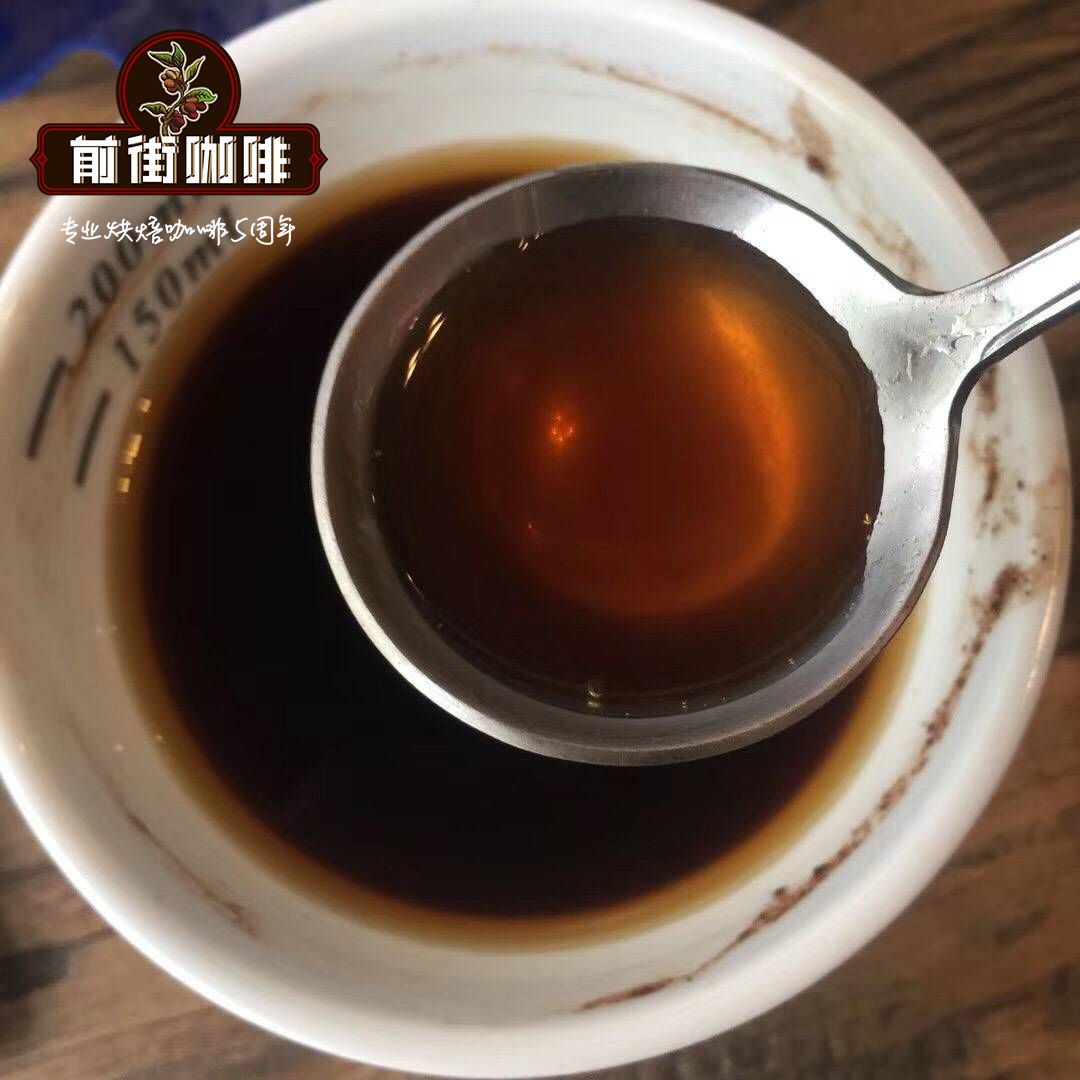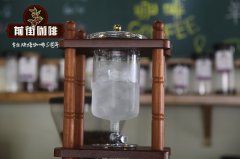Mokasanani MokhaSan'ani production area introduces how to drink Yemeni coffee?

Professional coffee knowledge exchange more coffee bean information please follow the coffee workshop (Wechat official account cafe_style)
The mention of Yemeni coffee immediately reminds people of the magical sun-dried beans that taste thick and full, with layers of fantastic wild aromas like fermented tea, as mysterious and elusive as the country in Yemen.
Yemen is located in Ethiopia across the Red Sea and East Africa in Asia, and is the highest quality producer of natural sunburn coffee. The coffee produced in Yemen is called mocha beans. In fact, Mocha is an export port of coffee. In the early days, sun beans including nearby East Africa were exported from the port of Mocha to all parts of the world, so the sun beans produced in Ethiopia, including Yemen and East Africa, are collectively called Moka beans.
The natural sun treatment of Yemeni coffee is to manually harvest fully mature coffee beans and directly place the newly harvested coffee beans in a special coffee drying yard or in their own compacted soil front yard to receive the sun. During the period of drying rice in Taiwan, you usually have to turn with a wooden rake to keep each bean evenly dried. After about 20 days of coffee drying, remove the outer pulp and peel from the coffee beans. Yemeni coffee has a rich, complex, mellow, strong fermentation flavor and low acidity, coupled with the uncertainty of Yemeni coffee (when it rains in the season). It is not too much to call it the most special coffee in the world.
Yemen is one of the driest countries in the world. Economically, the country currently relies on oil exports for three-quarters of its income, but the World Bank predicts that the country's stocks will be used up around 2017. In a country that used to be self-sufficient in farming, 80% of its crops now have to be imported. The reasons include population expansion and water shortages caused by local misuse of Qat, a crop as old as coffee.
Chart grass is a social drug commonly used by residents of the Arabian Peninsula. Yemenis like to open rooms for banquets at home, chewing chatgrass and gossiping with friends. It contains the stimulant Cathinone, which is as refreshing as a light amphetamine. However, when the power of the drug weakens, the person who takes it will feel depressed. Although the World Health Organization (WHO) does not list it as a drug, it has been banned in many Western countries.
On the other hand, Yemen has been plagued by drought since ancient times. Its major cities rely on underground water, of which agriculture takes up 90% of the water, while growing Qat alone has already spent a lot of water, and authorities expect the underground water in the capital, Sana'a, to run out in 2017. Most of Yemen's cities are built on high mountains, and residents rely on well water from the government or the private sector for a living. The country has as many as 40, 000 to 70, 000 wells, some as deep as 600 meters underground. In addition, pumping water up the hill is expensive, with the government spending as much as $7 billion a year on drilling and pumping water. Therefore, in recent years, the local government has decided to ban chartgrass, which is a waste of water and cannot satisfy hunger, and replace it with other crops. Coinciding with the rise of the boutique coffee boom, the Yemeni government is now trying to encourage farmers to switch to coffee, which consumes half as much water as Chategrass.
MokhaSan'ani: a widespread market name for coffee from some growing areas west of the Yemeni capital Sana'a. It is a mixed bean from tens of thousands of small farms on the hillside near the capital San'a. Planted at a slightly lower altitude than Madali, generally speaking, it tastes thinner and less acidic, but it has a good fruit flavor and often has better ripe fruit and wild game than Madali. It's about 1650 meters above sea level.
Coffee is different in size, color and color difference looks like a small pea and shell bad beans, raw beans have a fermented wine aroma, unlike Ethiopian red cherry coffee with eye-catching strawberry sandwich biscuit aroma, but the low-key, calm and full flavor of fermented wine is unmatched by sun beans in other countries.
Qianjie coffee is recommended to use 15g powder, BG 5R (China 20 sieve pass rate? ), V60 filter cup, 89-90 degrees water temperature, 25g water injection for the first time, steaming for 30s, water cut off to 125g water, waiting for powder bed water to go down to half and then water injection, slow water injection until 225g water, 5 grams at the end, water-powder ratio 1:15, extraction time about 2:00 (calculated after stewing)
Yemeni coffee flavor: well-balanced, dark chocolate, nuts, red berries, complex wild flavor, long-lasting sweetness of caramel
Qianjie coffee: Guangzhou bakery, the store is small but a variety of beans, you can find a variety of unknown beans, but also provide online store services. Https://shop104210103.taobao.com
Important Notice :
前街咖啡 FrontStreet Coffee has moved to new addredd:
FrontStreet Coffee Address: 315,Donghua East Road,GuangZhou
Tel:020 38364473
- Prev

El Salvador Coffee Brand Miravalle Mirabella Manor _ Mirabella Manor how to drink Black Honey
Professional coffee knowledge exchange more coffee bean information please follow the coffee workshop (Wechat official account cafe_style) treatment: washing (Wash) altitude: 1650 meters above sea level: bourbon certification: tropical rain forest certified roasting degree: shallow roasting extraction: Saifeng roasting day: 2018-9-12 tasting day: 2018-9-14 COE jury: aroma / flavor peach, cherry, black
- Next

How about Loma La Gloria Manor in El Salvador? grading criteria for Salvadoran coffee beans
Professional coffee knowledge exchange more coffee bean information please follow the coffee workshop (Wechat official account cafe_style) El Salvador Finca LOMA LA GLORIA Manor Micro-batch RED BOURBON S.H.G (LOT5) Special Note: because this kind of coffee bean belongs to micro-batch, the quantity is limited, in order to allow more customers to taste, so the supply is limited, the quantity is limited, first come first served.
Related
- Detailed explanation of Jadeite planting Land in Panamanian Jadeite Manor introduction to the grading system of Jadeite competitive bidding, Red bid, Green bid and Rose Summer
- Story of Coffee planting in Brenka region of Costa Rica Stonehenge Manor anaerobic heavy honey treatment of flavor mouth
- What's on the barrel of Blue Mountain Coffee beans?
- Can American coffee also pull flowers? How to use hot American style to pull out a good-looking pattern?
- Can you make a cold extract with coffee beans? What is the right proportion for cold-extracted coffee formula?
- Indonesian PWN Gold Mandrine Coffee Origin Features Flavor How to Chong? Mandolin coffee is American.
- A brief introduction to the flavor characteristics of Brazilian yellow bourbon coffee beans
- What is the effect of different water quality on the flavor of cold-extracted coffee? What kind of water is best for brewing coffee?
- Why do you think of Rose Summer whenever you mention Panamanian coffee?
- Introduction to the characteristics of authentic blue mountain coffee bean producing areas? What is the CIB Coffee Authority in Jamaica?

